 W
WThe Chilean Matorral (NT1201) is a terrestrial ecoregion of central Chile, located on the west coast of South America. It is in the Mediterranean forests, woodlands, and scrub biome, part of the Neotropical realm.
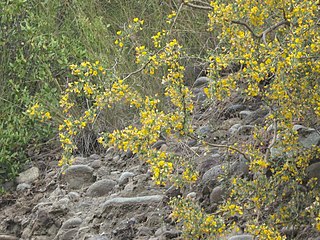 W
WAdesmia microphylla, pahuen, is a common shrub in Coastal Chilean Matorral of Central Chile, 400 to 1000 masl., associates with Proustia pungens and Lithrea caustica. This species was merged as A. arborea, a taxon including A. confusa Ulibarri, a distinctive plant with flowers over brachyblasts. The flowers of A. microphylla appear over spines.
 W
WThe Atacama myotis is a species of vesper bat in the family Vespertilionidae. It is found in Chile and Peru, an example ecoregion of occurrence being the Chilean matorral.
 W
WPeumus boldus, the only species in the genus Peumus, is commonly known as boldo. This tree of the family Monimiaceae is natively endemic to the central region of Chile, occurring from 33° to 40° southern latitude. Boldo has also been introduced to Europe and North Africa, though it is not often seen outside botanical gardens.
 W
WThe Chilean myotis is a species of vesper bat found in southern South America.
 W
WLiolaemus chiliensis is a species of lizard in the family Iguanidae. It is endemic to Chile and southwestern Neuquen Province, Argentina.
 W
WCryptocarya alba, the peumo or Chilean acorn, is an evergreen tree that grows in Chile and Argentina from 33 to 40° southern latitude. It can live both in wet and as in dry conditions. Its distribution can reach up to 1500 meters (5000 ft) above sea level. It measures up to 20 meters (65 ft) height and one meter diameter, with cracked gray bark. An associate tree is the endangered Chilean Wine Palm, Jubaea chilensis, which species prehistorically had a much wider range.
 W
WDasyphyllum diacanthoides. Common names in Mapudungun: Trevo and Tayu and in Spanish Palo Santo and Palo Blanco is a species of tree belonging to the family Asteraceae and endemic to Chile and Argentina. It occurs from Curico to Chiloe between 200 and 800 m above sea level. It grows in both moist and shaded sites and more open and arid areas.
 W
WThe Desventuradas Islands is a group of four small islands located 850 kilometres (530 mi) off the coast of Chile, northwest of Santiago in the Pacific Ocean. They are considered part of Insular Chile.
 W
WGeoffroea decorticans, the chañar, kumbaru, or Chilean palo verde, is a small deciduous tree, up to 8 meters (25 ft) tall that inhabits most arid forests of southern South America. The chañar is cold and drought deciduous; it loses its leaves in winter, and possibly in summer if conditions get too dry. It is natural to Bolivia, Chile, Argentina, also present in Paraguay and southern Peru. It is a very characteristic tree in local culture and folk because of its vivid visual presence, propagation, and ancient ethnomedical uses.
 W
WGevuina avellana is an evergreen tree, up to 20 meters tall. It is the only species currently classified in the genus Gevuina. It is native to southern Chile and adjacent valleys in Argentina. It is found from sea level to 700 meters above sea level. Its distribution extends from 35° to 44° south latitude. The composite leaves are bright green and toothed, and the tree is in flower between July and November. The flowers are very small and beige to whitish, are bisexual and group two by two in long racemes. The fruit is a dark red nut when young and turns black. The peel is woody. It can grow up straight or branched from the soil, making up either a tree or a shrub.
 W
WGevuina avellana is an evergreen tree, up to 20 meters tall. It is the only species currently classified in the genus Gevuina. It is native to southern Chile and adjacent valleys in Argentina. It is found from sea level to 700 meters above sea level. Its distribution extends from 35° to 44° south latitude. The composite leaves are bright green and toothed, and the tree is in flower between July and November. The flowers are very small and beige to whitish, are bisexual and group two by two in long racemes. The fruit is a dark red nut when young and turns black. The peel is woody. It can grow up straight or branched from the soil, making up either a tree or a shrub.
 W
WGomortega keule is a tree native to Chile. It is the sole species of the genus Gomortega and, according to the APG IV system of 2016, of the monotypic family Gomortegaceae, assigned to the order Laurales in the clade magnoliids.
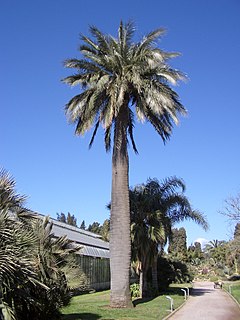 W
WJubaea is a genus of palms with one species, Jubaea chilensis or Jubaea spectabilis, commonly known as the "Chilean wine palm" or "Chile cocopalm". It is native to southwestern South America and is endemic to a small area of central Chile between 32°S and 35°S in southern Coquimbo, Valparaíso, Santiago, O'Higgins, and northern Maule regions.
 W
WJubaea is a genus of palms with one species, Jubaea chilensis or Jubaea spectabilis, commonly known as the "Chilean wine palm" or "Chile cocopalm". It is native to southwestern South America and is endemic to a small area of central Chile between 32°S and 35°S in southern Coquimbo, Valparaíso, Santiago, O'Higgins, and northern Maule regions.
 W
WLiolaemus atacamensis is a species of lizard in the family Iguanidae. It is endemic to Chile, with occurrence noted in the Chilean matorral.
 W
WLiolaemus chiliensis is a species of lizard in the family Iguanidae. It is endemic to Chile and southwestern Neuquen Province, Argentina.
 W
WLiolaemus fuscus is a species of lizard in the family Iguanidae. It is found in parts of western Argentina and central Chile in the Chilean matorral ecoregion. The conservation status of this iguana is classified as Data Deficient (DD).
 W
WLiolaemus nigromaculatus is a species of tree iguana endemic to the Chilean matorral ecoregion within Chile. The species was first described in 1834, by Arend Friedrich August Wiegmann and was later rediscribed in 2013 by Chilean biologists.
 W
WLiolaemus nitidus is a species of lizard in the family Iguanidae. It is endemic to Chile, notably within the Chilean matorral ecoregion.
 W
WLiolaemus platei, known by the common name braided tree iguana, is a species of lizard in the family Liolaemidae. The species is endemic to Chile.
 W
WLiolaemus pseudolemniscatus is a species of lizard in the family Iguanidae. It is endemic to Chile, with occurrence noted in the Chilean matorral.
 W
WLiolaemus silvai is a species of lizard in the family Liolaemidae. The species is endemic to Chile, with occurrence noted in the Chilean matorral.
 W
WLithraea caustica is a species of flowering plants in the soapberry family Anacardiaceae. This plant is endemic to central Chile; an example occurrence is in the area of La Campana National Park and Cerro La Campana. The tree is a well known allergenic and can cause a rash of the skin, the effects and susceptibility of which can vary greatly from person to person.
 W
W"Los Ruiles National Reserve" is a small nature reserve located in easternmost Municipality of Pelluhue, Province of Cauquenes, Maule Region, Chile.
 W
WMadia sativa, known by the common names coast tarweed and Chilean tarweed, is a species of flowering plant in the aster family found in parts of western North and South America.
 W
WMaytenus boaria (mayten) is an evergreen tree of the family Celastraceae, native from South America, up to 20 m (66 ft), 80 cm (31 in) diameter, straight trunk. It occurs naturally approximately from 30 to 50ºS: Chile and Argentina.
 W
WNothofagus alessandrii (ruil) is a species of plant in the family Nothofagaceae, commonly known as the southern beeches. It is endemic to Chile, occurring chiefly in the Chilean matorral ecoregion. It is threatened by habitat loss. The species is protected within Los Ruiles National Reserve.
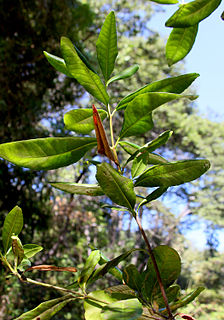 W
WPitavia punctata is a species of tree endemic to Chile in the family Rutaceae. It is endemic to Chile; an example habitat being the Chilean matorral. It is threatened by habitat loss. Distinctive common names: Pitao, Pitran. It is found from Maule to Malleco.
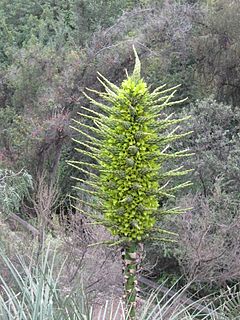 W
WPuya chilensis is a terrestrial bromeliad originating from the arid hillsides of Chile.
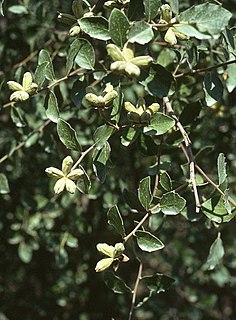 W
WQuillaja saponaria, the soap bark tree or soapbark, is an evergreen tree in the family Quillajaceae, native to warm temperate central Chile. In Chile it occurs from 32 to 40° South Latitude approximately. Populations are found even 2000 m (6500 ft) above sea level. It can grow to 15–20 m (50–65 ft) in height. The tree has thick, dark bark; smooth, leathery, shiny, oval evergreen leaves 3–5 cm long; white star-shaped flowers 15 mm diameter borne in dense corymbs; and a dry fruit with five follicles each containing 10–20 seeds.
 W
WRhinella atacamensis, sometimes called the Vallenar toad or Atacama toad, is a species of toad in the family Bufonidae. It is endemic to Chile and occurs between Paposo and Las Chilcas. It inhabits the desert Pacific coastal region with Mediterranean influences and is found in and near oases and streams. Breeding takes place in permanent pools, streams, and rivers. While abundant at a few sites, it has declined overall and gone locally extinct at some sites. Threats to this species include extensive droughts and water pollution as well as extraction of surface water, mining, agriculture, livestock farming, and timber plantations.
 W
WSclerophyll is a type of vegetation that has hard leaves, short internodes and leaf orientation parallel or oblique to direct sunlight. The word comes from the Greek sklēros (hard) and phyllon (leaf).
 W
WVachellia caven is an ornamental tree in the family Fabaceae. Vachellia caven is native to Argentina, Bolivia, Chile, Paraguay, and Uruguay. It grows four to five metres tall and bears very stiff and sharp white thorns up to 2 cm in length. It blooms in Spring, with bright yellow flower clusters 1 cm to 2 cm in diameter.